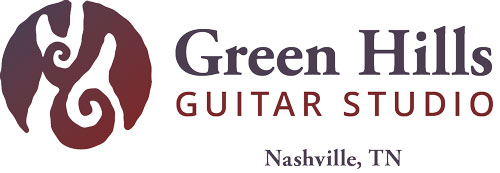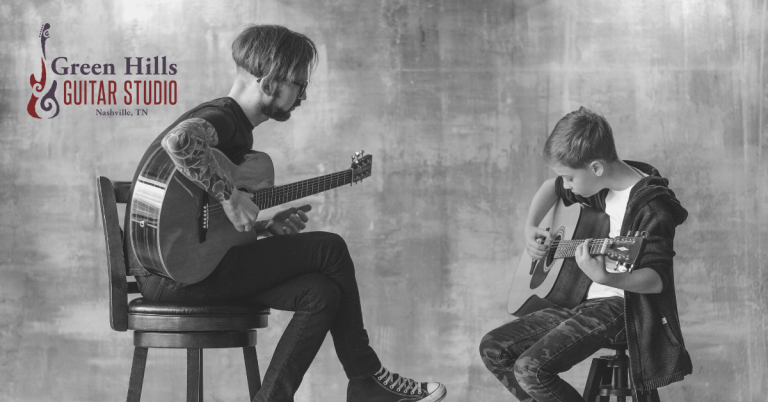How to Use Triads to Play Chords Anywhere on the Neck
Learning to navigate the fretboard with confidence is a major step in any guitarist’s growth, and triads are an essential tool for making this possible. These three-note chord shapes let you play chords in different positions across the neck, offering more options for voicings and smoother transitions.
In this guide, we’ll explain what triads are, how to use them to play chords anywhere on the neck, and why they’re important for every guitarist. We’ll also include diagrams to show triads and their inversions, starting with the lowest note on strings 6, 5, 4, and 3. Let’s get started!
What Are Triads?
A triad is the simplest form of a chord, made up of three notes: the root, third, and fifth. These three notes form the harmonic foundation of most music, and learning their shapes on the guitar opens up countless possibilities.
Why Triads Are Important
- Fretboard Navigation: Triads help you see the fretboard as a series of interconnected patterns, making it easier to find chords in any position.
- Simplified Voicings: Triads strip down chords to their essential notes, which can cut through a mix more effectively than full barre chords.
- Creative Freedom: Using triads allows you to explore new textures, rhythms, and harmonic possibilities in your playing.
How to Play Triads on the Guitar
Triads are the foundation for understanding chords and their shapes on the guitar. They can be played on different string sets, with their shapes varying depending on where the root note is located.
By learning triads with the lowest note starting on strings 6, 5, 4, and 3, you’ll gain the flexibility to play chords in multiple positions across the fretboard, a critical step in using the CAGED system.
In this section, we’ll cover major, minor, diminished, and augmented triads in root position, first inversion, and second inversion. Understanding these chord qualities is essential for building triads and recognizing their shapes across the fretboard.
Chord quality:
- Major Triads: Built with the root, major third, and perfect fifth.
- Minor Triads: Lower the third by one fret to create a minor third while keeping the perfect fifth.
- Diminished Triads: Lower both the third and fifth by one fret to form a minor third and a diminished (flat) fifth.
- Augmented Triads: Raise the fifth by one fret to form an augmented (sharp) fifth while keeping the root and major third.
Triad inversions:
- Root Position: The root is the lowest note
- First Inversion: The third is the lowest note
- Second Inversion: The fifth is the lowest note
With this knowledge, you’ll develop a deeper understanding of chord construction and gain the flexibility to use triads anywhere on the neck. Let’s explore each starting point!
Triads Starting on the 6th String
Triads with the lowest note on the 6th string form the foundation for bass-heavy and full-sounding chords. These shapes are especially useful when playing rhythm guitar or creating powerful voicings in the lower register.

Triads Starting on the 5th String
Moving to the 5th string, triads take on slightly different shapes but remain essential for playing in the guitar’s midrange. They are great for balancing with other instruments in a band or adding variety to your chord voicings.

Triads Starting on the 4th String
Triads rooted on the 4th string are perfect for creating clear, focused voicings in the higher register. These are often used in rhythm playing for jazz, funk, and pop styles, as well as melodic comping.

Triads Starting on the 3rd String
Triads based on the 3rd string are ideal for adding texture and brightness to your playing. These shapes are excellent for lead lines, chord embellishments, or layering with other instruments.

Connecting Triads Across the Neck
One of the best things about triads is their ability to “connect the dots” on the fretboard. Here’s how you can practice linking them:
Exercise 1: Play a Chord in Multiple Positions
- Choose a simple chord like G major.
- Play the G major triad in root position, first inversion, and second inversion, starting on the 6th string.
- Repeat the process on the 5th, 4th, and 3rd strings.
Exercise 2: Map a Chord Progression with Triads
- Take a common progression like C–G–Am–F.
- Instead of using open or barre chords, find triads for each chord and play them in different positions on the neck.
- Focus on smooth transitions between triads.
Exercise 3: Combine Triads with Rhythm
- Use triads to play rhythmic patterns, such as eighth-note strumming or syncopated rhythms.
- Experiment with muting to create percussive textures.
Practical Applications of Triads
Once you’re comfortable with triads, you’ll find endless ways to use them in your playing:
1. Rhythm Guitar
Triads are perfect for rhythm playing, especially in a band setting. They allow you to create clear, cutting voicings that stay out of the bass player’s range.
2. Lead Guitar
Incorporate triads into your solos for a melodic, harmonically rich approach. Sliding between triad shapes can add smoothness and depth to your lead lines.
3. Songwriting and Arranging
Use triads to experiment with different chord voicings and progressions. By trying out inversions, you can find unique ways to voice common chords.
Tips for Practicing Triads
- Use a Metronome: Play triads along with a metronome to improve timing and precision.
- Learn All Shapes: Master triads in root position, first inversion, and second inversion on each string set.
- Apply to Songs: Practice using triads in the context of songs you already know. Replace full chords with triads to add variety.
- Mix with Scales: Combine triads with scales to improve fretboard fluency and melodic playing.
The Coda
Triads and their inversions are indispensable tools for any guitarist. They open up the fretboard, improve your rhythm and lead playing, and provide endless creative possibilities. By incorporating triads into your practice routine, you’ll gain a deeper understanding of the guitar and unlock new levels of musicality.
If you’re ready to take your playing further, consider taking guitar lessons at Green Hills Guitar Studio. Our experienced instructors can help you master triads, inversions, and much more. Whether you’re a beginner or an advanced player, we’ll work with you to achieve your musical goals. Contact us today to get started!






